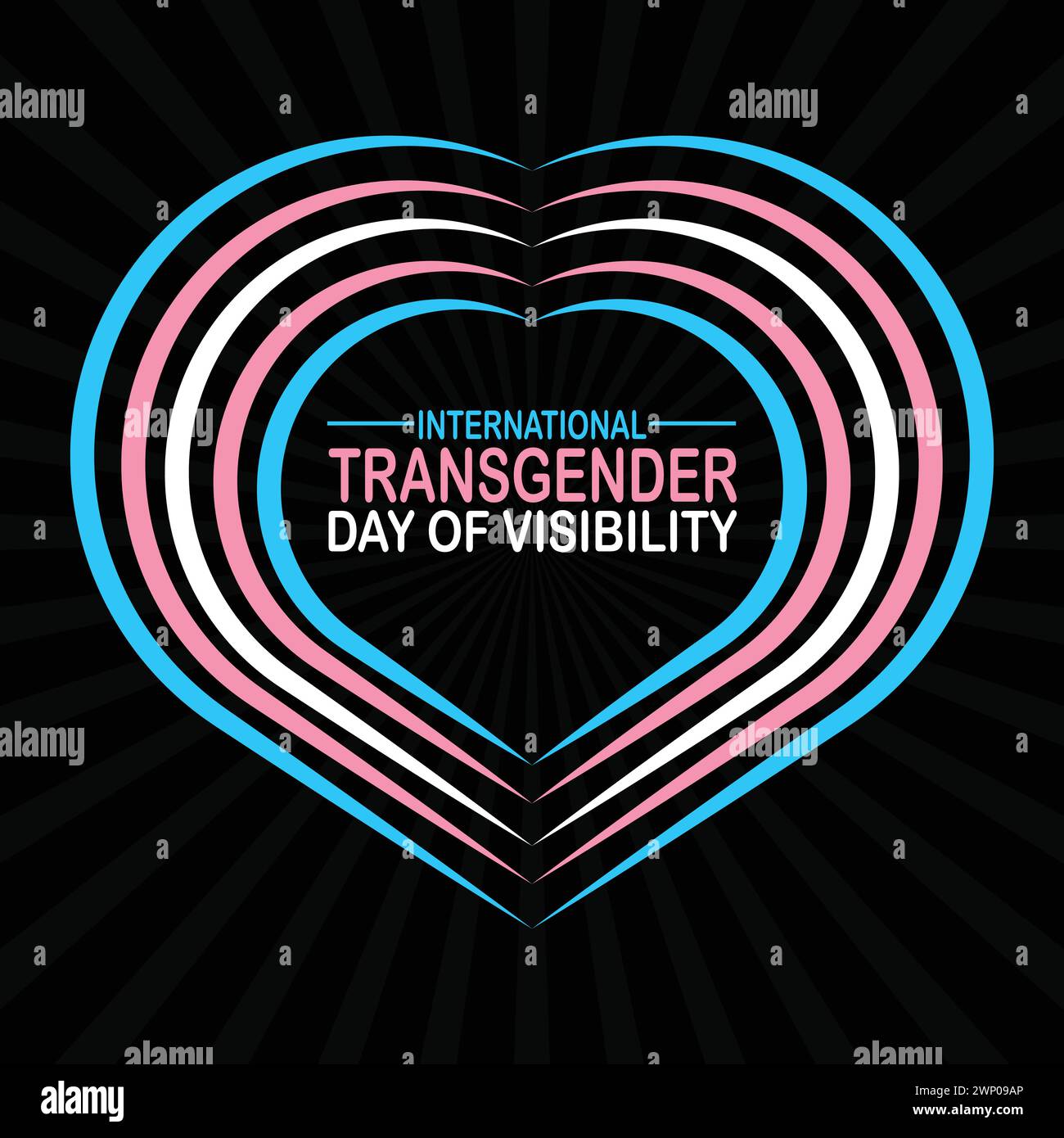Become A Better Ally: Your Guide To International Transgender Day Of Visibility

Table of Contents
Educate Yourself About Transgender Identities and Experiences
Understanding the transgender community is the cornerstone of effective allyship. It's crucial to remember that "transgender" encompasses a diverse range of identities and experiences. There is no single "transgender experience."
- Gender Identity vs. Gender Expression vs. Sexual Orientation: Understanding these distinct concepts is vital. Gender identity refers to one's internal sense of being a man, woman, both, neither, or somewhere else along the gender spectrum. Gender expression refers to how someone outwardly presents their gender. Sexual orientation describes who someone is attracted to. These are all independent aspects of identity.
- Key Terms: Familiarize yourself with terminology such as cisgender, transgender, non-binary, gender fluid, and other terms used to describe gender identity. Avoid using outdated or offensive language.
- Reputable Resources: Expand your understanding by consulting reputable organizations such as GLAAD (Gay & Lesbian Alliance Against Defamation), The Trevor Project, and the Human Rights Campaign (HRC). These organizations offer a wealth of information on transgender identities and issues.
Debunking Common Myths and Misconceptions
Many misconceptions surround transgender identities. It’s crucial to challenge these harmful stereotypes:
- Myth: Transgender identity is a choice. Reality: Gender identity is an intrinsic aspect of a person's being and is not a choice.
- Myth: Transitioning is solely about surgery. Reality: Transitioning is a deeply personal journey that can include medical interventions (hormone replacement therapy, surgeries), but it also encompasses social and legal transitions (changing names and pronouns, updating documents).
- Myth: Transgender people are predatory or a threat to cisgender people. Reality: This is a dangerous and harmful stereotype with no basis in fact. Violence against transgender people is a significant issue, and it's crucial to challenge this harmful narrative.
Understanding the Challenges Faced by Transgender Individuals
Transgender individuals face significant challenges, including:
- Discrimination: Many transgender people experience discrimination in employment, housing, healthcare, and education.
- Violence: Transgender people, particularly transgender women of color, are disproportionately affected by violence and hate crimes.
- Lack of Access to Healthcare: Access to gender-affirming healthcare is often limited due to cost, lack of providers, and insurance coverage issues.
- Legal Challenges: Legal battles surrounding bathroom access, name changes, and other issues are ongoing in many places.
Advocate for Transgender Rights and Inclusion
Allyship involves actively working to create a more just and equitable world for transgender individuals. This means taking concrete steps to combat transphobia and advocate for change.
- Speak Out Against Transphobia: Challenge transphobic comments and actions whenever and wherever you safely can.
- Support Organizations: Donate to and volunteer with organizations that support transgender rights, such as the ACLU, GLAAD, and The Trevor Project.
- Contact Elected Officials: Contact your elected officials to express your support for legislation that protects transgender rights.
- Sign Petitions: Sign and share petitions advocating for transgender rights and equality.
Supporting Trans-Inclusive Policies
Support policies that protect transgender rights in various areas:
- Healthcare: Advocate for access to affordable and comprehensive gender-affirming healthcare.
- Housing: Support policies that prevent discrimination against transgender individuals in housing.
- Employment: Support anti-discrimination laws that protect transgender individuals in the workplace.
Promoting Inclusive Language
Using inclusive language is a fundamental aspect of allyship:
- Respect Chosen Names and Pronouns: Always use a person's chosen name and pronouns. If unsure, politely ask.
- Avoid Misgendering: Misgendering is a deliberate act of disrespect; correct yourself and others when it happens.
- Use Inclusive Language: Use terms like "partner" instead of "husband/wife" to avoid making assumptions.
Demonstrating Allyship in Everyday Interactions
Allyship isn't limited to grand gestures; it’s about creating inclusive spaces in everyday interactions.
- Create Safe Spaces: Actively cultivate an environment where transgender individuals feel safe, respected, and included.
- Active Listening: Truly listen to and learn from the experiences of transgender people.
- Open Dialogue: Create opportunities for open and respectful conversations about gender identity and transgender issues.
Responding to Transphobic Comments and Behaviors
When encountering transphobic comments or actions:
- Challenge respectfully: Politely and firmly challenge transphobic remarks, explaining why they are harmful and inaccurate.
- Educate: Offer factual information to counter misinformation.
- Support the target: If someone is the target of transphobic behavior, offer your support and solidarity.
Showing Support Through Small Acts
Small acts can make a big difference:
- Use Inclusive Language: Make a conscious effort to use inclusive language in all your interactions.
- Correct Misgendering: Correct others when you hear someone misgender a transgender person.
- Educate Others: Share information about transgender issues with your friends, family, and colleagues.
Celebrating International Transgender Day of Visibility
ITDoV is more than a single day; it’s a catalyst for ongoing action.
- Participate in Events: Attend or organize events to celebrate ITDoV.
- Use Hashtags: Share messages of support on social media using relevant hashtags such as #ITDoV, #TransVisibility, #TransRights, and #TransgenderDayOfVisibility.
- Amplify Transgender Voices: Share and amplify the voices and stories of transgender individuals.
Amplifying Transgender Voices
Give a platform to transgender voices and experiences:
- Follow Trans Activists: Follow and support transgender activists and advocates on social media.
- Share Their Stories: Share the stories and perspectives of transgender individuals to raise awareness.
- Center Trans Experiences: Ensure that transgender narratives are central to discussions about transgender issues.
Promoting Inclusivity Beyond ITDoV
The work of allyship extends far beyond ITDoV. This is a continuous commitment:
- Ongoing Education: Continue learning about transgender issues throughout the year.
- Sustained Advocacy: Maintain your advocacy efforts throughout the year.
- Consistent Support: Continue to show your support for transgender individuals and communities.
Conclusion: Continue Your Journey as a Better Ally on International Transgender Day of Visibility and Beyond
International Transgender Day of Visibility serves as a crucial reminder of the importance of education, advocacy, respectful interaction, and ongoing commitment to transgender rights. By actively engaging in these areas, we can build a more inclusive and equitable world where all transgender individuals feel safe, respected, and valued. Let's make this International Transgender Day of Visibility and every day thereafter a testament to our commitment to allyship. Continue your journey by following transgender rights organizations on social media, donating to relevant charities, and actively participating in creating a more inclusive community. Remember, allyship is a continuous process of learning, listening, and acting. Let's make every day a day of transgender visibility and celebrate the diverse richness of the transgender community.

Featured Posts
-
 Investigating Us Funding For Transgender Animal Research Studies
May 10, 2025
Investigating Us Funding For Transgender Animal Research Studies
May 10, 2025 -
 Nhl Playoff Picture Post 2025 Trade Deadline Predictions
May 10, 2025
Nhl Playoff Picture Post 2025 Trade Deadline Predictions
May 10, 2025 -
 Call For Regulatory Reform Indian Insurers And Bond Forwards
May 10, 2025
Call For Regulatory Reform Indian Insurers And Bond Forwards
May 10, 2025 -
 Nigel Farages Reform Party Action Or Rhetoric
May 10, 2025
Nigel Farages Reform Party Action Or Rhetoric
May 10, 2025 -
 French Minister Highlights Importance Of Shared Nuclear Deterrence In Europe
May 10, 2025
French Minister Highlights Importance Of Shared Nuclear Deterrence In Europe
May 10, 2025
